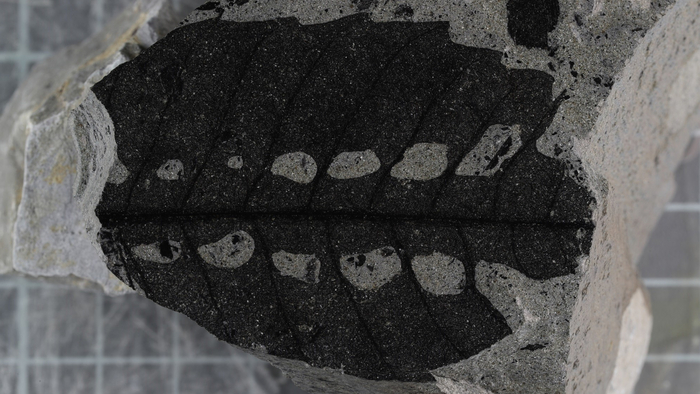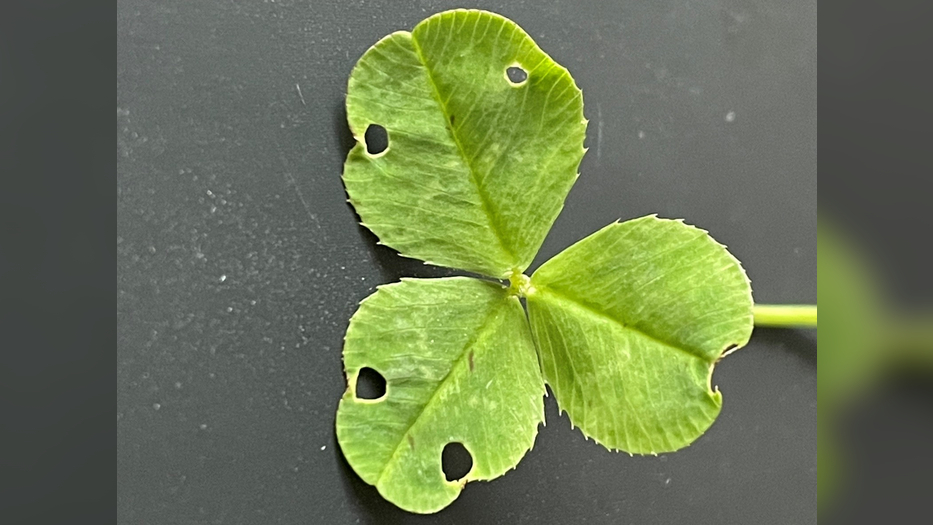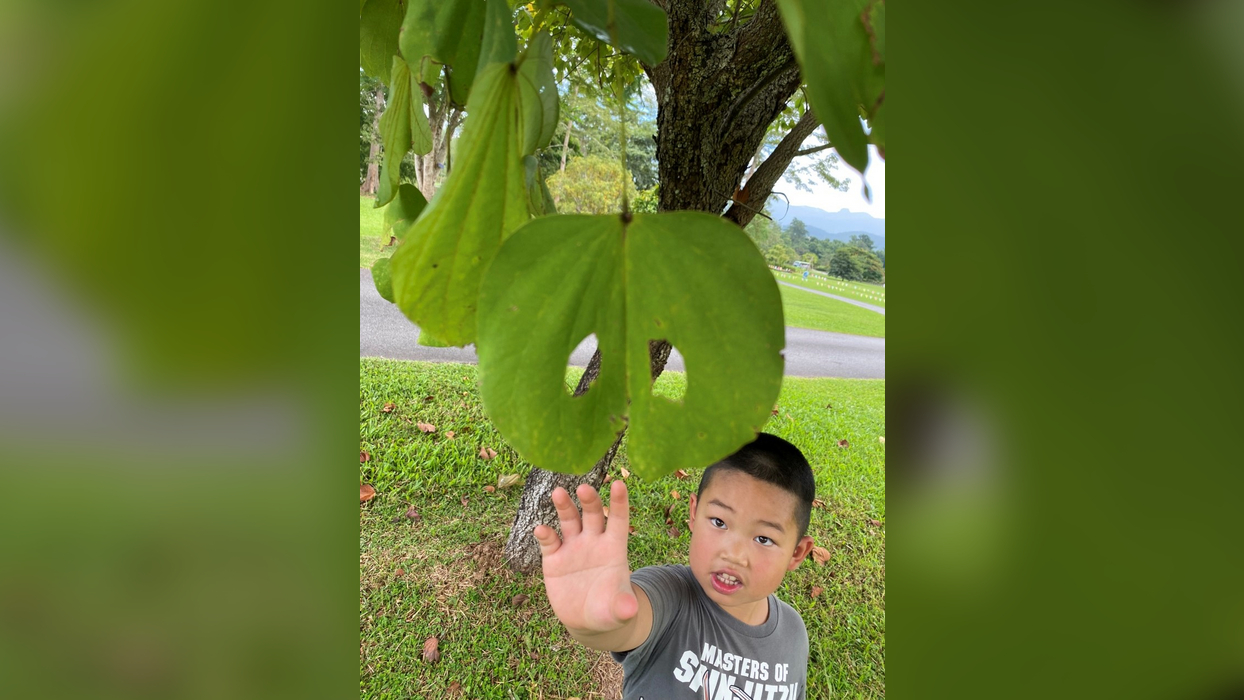Plants 'slept' with curled leaves 250 million years ago, ancient insect bites reveal
Leaves from the Permian period curled up at night, fossils of symmetrical insect bites show.

Each night at sunset, a handful of plants "fall asleep." Species as diverse as legumes and daisies curl up their leaves and petals for the evening and do not unfurl until morning.
Now, a new study suggests that plants may have been folding their leaves at night for more than 250 million years. By tracking the unique bite marks that insects inflict only upon folded leaves, the authors determined that one extinct group of plants were likely nyctinastic — the scientific term for plants curling up in response to darkness.
"Since it is impossible to tell whether a folded leaf found in the fossil record was closed because it experienced sleeping behavior or because it shriveled and bent after death, we looked for insect damage patterns that are unique to plants with nyctinastic behavior," study co-author Stephen McLoughlin, curator of Paleozoic and Mesozoic plants fossil collections at the Swedish Museum of Natural History in Stockholm, said in a statement. "We found one group of fossil plants that reveals a very ancient origin for this behavioral strategy."

Charles Darwin described "sleep movements in plants" in 1880 in his book "The Power of Movement in Plants," but the phenomenon had already been documented as far back as 324 B.C. by Androsthenes of Thasos, an associate of Alexander the Great. It's hard to miss — stroll through any garden near dusk, and you'll likely notice a few flower species closing their petals.
Scientists aren't sure why some plants close up shop for the night. Various studies have proposed that the behavior may play a role in temperature regulation or drain excess water from the leaf's surface. One intriguing possibility is that nyctinasty is the plant's way of fighting back against insects — curling up tightly to provide less cover for whatever feeds on them, thereby ensuring that offending insects remain in plain view of predators.
Related: Bloom entombed in amber is the largest fossilized flower ever found
But if plant sleeping behavior is a defense mechanism, it clearly does not work every time. In fact, one of the telltale signs of nyctinasty is that the plants' leaves are often pockmarked by perfectly symmetrical holes. Not unlike what happens when a child cuts shapes into folded paper to make a snowflake, any hole punched through a folded leaf by an insect will show up on both sides of that leaf when it opens.
Sign up for the Live Science daily newsletter now
Get the world’s most fascinating discoveries delivered straight to your inbox.

McLoughlin and his colleagues decided to exploit that pattern to examine whether extinct plant species also practiced nyctinasty. For the study, they looked at a group of Permian plants known as gigantopterids, which died out 252 million years ago during the Permian-Triassic extinction event. Based on the fossil record, scientists suspect that gigantopterids sported fern-like fronds and woody stems, grew about 10 inches (25 centimeters) tall, and may have crawled up trees as vines.
After examining hundreds of specimens and photographs of gigantopterid fossils, the authors discovered symmetrical holes indicating that the leaves of these prehistoric plants were mature and folded when they were bitten.
The results, published Feb. 15 in the journal Current Biology, provide the strongest evidence to date of nyctinasty in ancient plant species.
The findings also drive home the importance of studying interactions between ancient organisms. "Evidence of fossil insect damage on leaves can provide a great deal more information about plant 'behavior' and ecology than just herbivory," McLoughlin said. "The fossil record of plant-animal interactions is a rich and largely untouched bank of ecological data."

Joshua A. Krisch is a freelance science writer. He is particularly interested in biology and biomedical sciences, but he has covered technology, environmental issues, space, mathematics, and health policy, and he is interested in anything that could plausibly be defined as science. Joshua studied biology at Yeshiva University, and later completed graduate work in health sciences at Cornell University and science journalism at New York University.









